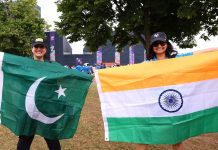India is all set to join a multilateral naval exercise ‘La Perouse’ led by France, involving Australia, Japan, and the United States navies, making it a full QUAD stack-up in the Bay of Bengal.
This would be the latest conglomeration of QUAD navies after the Malabar-2020 exercises held last year.
The ‘La Perouse’ exercises would be conducted from 5th to 7th April 2021, and the Indian and French navies would then follow on with their own maritime exercise ‘Varuna’ in the western Indian Ocean, which shall also be joined by the United Arab Emirates.
In the first edition of La Perouse held in 2019, India was not invited, and only the US, Japanese, and Australian navies were called for the common goal to support maritime security in the Indian Ocean.

The recent standoff with China and the tensions at the South China Sea have moved New Delhi closer to like-interested nations, with the speculations of a “Quad-plus” framework amid rising interest from extra-regional players like France.
However, this engagement of the French navy is seen as rather “incomparably unique” by the experts at the New Delhi-based think tank Observer Research Foundation.
Why is France interested in Indo-Pacific?
Currently, the country’s more than 93 percent of the exclusive economic zone lies with its overseas territories in the Indian Ocean. The southern part of the Indian Ocean is home to French territories of Mayotte and La Réunion, the Scattered Islands, and the French Southern and Antarctic Territories.
Moreover, France is the only European country that possesses overseas territories in both—the Indian and Pacific oceans. France also boasts of the world’s second-largest Exclusive Economic Zone (EEZ) on account of nearly 9 million square kilometers of French EEZs in the Indo-Pacific.
The French overseas territories in the region are home to 1.6 million French citizens and another 200,000 French nationals live in the Indo-Pacific states.
In November last year, Paris also appointed the first-ever ambassador for the Indo-Pacific, underscoring its prioritization of the region.
The researchers at ORF also mentioned the French military’s outposts in the region, organized into multiple joint commands—Command of the French Armed Forces in the South of the Indian Ocean (COMSUP FAZSOI), Command of the French Armed Forces in New Caledonia (COMSUP FANC), Command of the French Armed Forces in French Polynesia and Command of the Pacific Ocean maritime zone (COMSUP FAPF/ALPACI), Command of the French Armed Forces in the United Arab Emirates and Command of the Indian Ocean maritime zone (COMFOR FFEAU/ALINDIEN), and Command of the French Armed Forces in Djibouti (COMFOR FFDJ).
Notably, across these commands, the major share of France’s 7,000 personnel presence is in the Indian Ocean, with 4,100 personnel in the subregion and 2,900 in the Pacific.
France has also stated India as its “foremost strategic partner in the region. This is also strengthened by the increased cooperation in defense manufacturing, most notably its support for the Indian Navy’s new Scorpene-class (Kalvari-Class) submarines and the famous Rafale fighter jets for the Indian Air Force.
New Delhi and Paris’s common interest in the Indian Ocean have aligned the two nations. In regards to the American cooperation with India, the ORF experts noted that despite the significance of the US’ political, military and capacity-building support for India’s efforts in the Indian Ocean region, the primary purpose behind Washington cultivating India’s rise as the region’s security provider is its intent to fully focus its resources in the Pacific subregion of the Indo-Pacific.
Under Biden, this focus on the Pacific is expected to persist, with his administration continuing the Trump approach of “strategically predictable, but operationally unpredictable” US naval operations in the South China Sea and the Taiwan Strait.
Meanwhile, French interests are termed as having the “skin in the game”, with its overseas territories rendering the region to be a matter of sovereignty—much like New Delhi’s outlook.
Hence, under its policy of honing multiple “strategic alignments” in the Indo-Pacific, India chose to conduct Joint Patrols in the Indian Ocean with France and turned down offers from “several senior US military officers” to conduct patrols with the US Navy.




